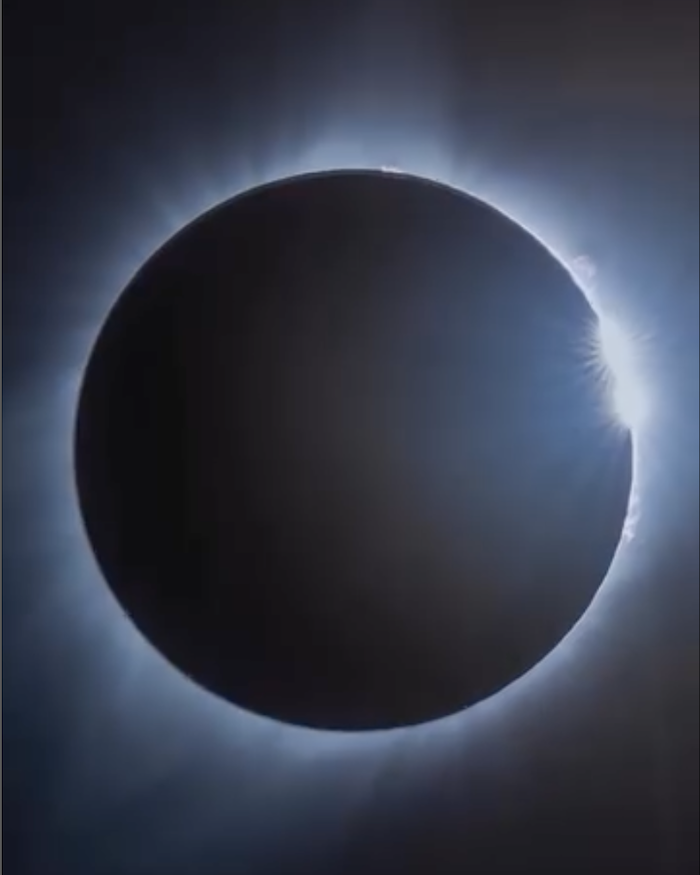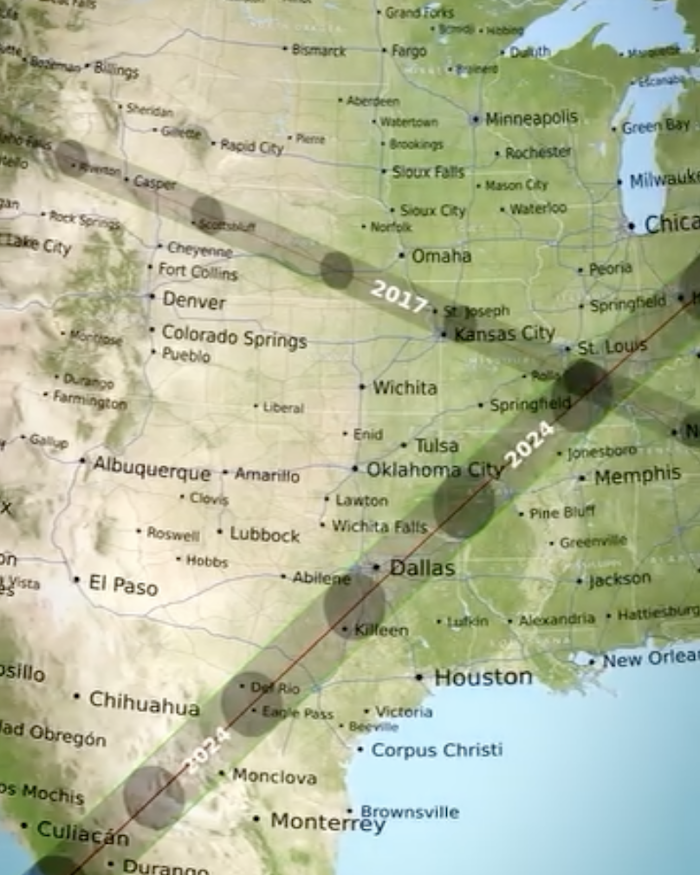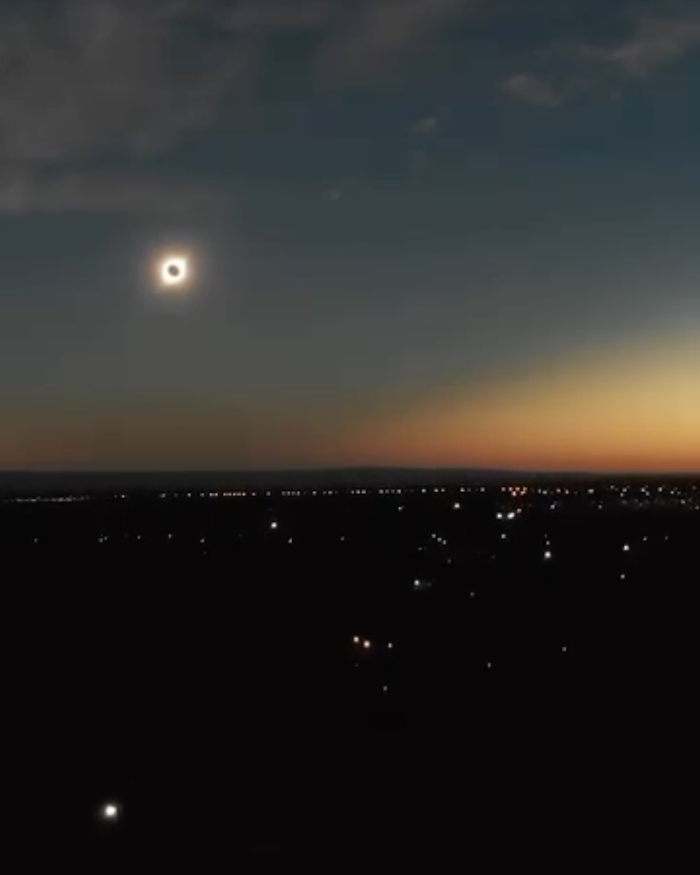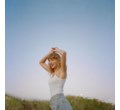TRENDING
In the News
Everything you need to know about the April 8 solar eclipse, straight from NASA

If you've been anywhere on the Internet for the last week, you know that the entire country is waiting on the edge of its seat for the total solar eclipse, which will pass over North America on April 8, 2024.
How much of the eclipse you'll see depends on where you are. But even if you don't live in the path of totality (aka the area where the eclipse can be seen in full, starting in Mexico and heading north from Texas through Maine), there's a good chance you'll see at least *some* of the eclipse if you live in the continental U.S.
As we get ready for Monday's solar show, we had the chance to chat with Dr. Nicola "Nicky" Fox, Associate Administrator for NASA's Science Mission Directorate, about what we can plan on seeing when we look up at the sky. Keep reading for Dr. Fox's tips for enjoying the eclipse (no matter where you are)!
Girls' Life: Why is this particular eclipse so exciting?
Dr. Fox: Part of the reason is that it's a longer eclipse. The actual time of totality is longer than the one in 2017. Here in Texas, we should see about four minutes and 25 seconds. The other great thing about it is that 31 million people live in the path of totality, and all 48 contiguous states will see some form of the eclipse.
We are also in a very different phase of the solar cycle than we were in 2017. The sun has roughly an 11-year cycle. As it moves up toward the maximum phase of the solar cycle, we get a lot of space weather events, and the sun looks very different—actually a little brighter. So the corona (the hazy atmosphere that you see during the total solar eclipse) will look different than how it looked in 2017.
GL: That's amazing! How can people know if they're in the path of totality, or how much of the eclipse they'll see?
Dr. Fox: We have eclipse maps and all kinds of things on our website. You can go to nasa.gov/eclipse-2024 to find an interactive map. You can even type in your zip code, and it will tell you how much of the eclipse you can see from there. It's important to know, because if you're not in the path of totality, you must wear eclipse glasses all the time.
You can only take the eclipse glasses off when the moon is completely blocking out the light from the sun, and if you're in the path of totality and you've got your glasses on, you'll suddenly see nothing. That's when you can take your glasses off.
GL: So where can we find eclipse glasses? Or is there a way we can make glasses ourselves?
Dr. Fox: If you happen to live anywhere where NASA is doing an eclipse-viewing event, we'll be giving out glasses. There are some libraries and community centers where we've sent glasses, so a library could be a good place to get some. Just always make sure that they're legit eclipse glasses, and if you go to our website, there's information about how to check if your glasses are really safe.
Sunglasses are not safe. I've had people ask me, "Oh, what if I've got really strong sunglasses, or what if I put sunscreen on my sunglasses? Can I wear those?" No, you can't. You will damage your eyes.
If you can't get glasses, you can make a pinhole projector. And failing all of those, it's totally safe to watch the eclipse on the web on our live broadcast. We'll be broadcasting all through the path of totality.
GL: If you're in the path of totality, what will the total eclipse look like? What can people expect?
Dr. Fox: When you're looking through your eclipse glasses, you can literally see the sun disappearing, and it looks like it's being gobbled up as the moon comes across the face of the sun.
There are really cool things right before totality. The moon is not a perfect circle—it has craters and a lot of bumps in it. So you'll actually see bits of the sun right before totality. We call it "Baily's beads," and you'll see very small points of light. And then there's the "diamond ring," which comes from the largest crater on the moon. That makes it look like it has a beautiful diamond ring shape right before totality.
But the star of the show, of course, is the sun, which will just dazzle with its corona. As soon as you see totality, it's like somebody turns on the corona. It's actually there all the time, but you can't see it because the sun's light is so bright. But once you take away that light, you can see that beautiful, hazy atmosphere.
GL: Will it get really dark during the eclipse?
Dr. Fox: You'll experience something like instant night, so you can look up and see stars in the daytime. During the last eclipse, I remember being able to see a lot of planets like Venus and Mercury.
You'll also see the shadow of the eclipse racing toward you as you're waiting for totality to come, and then it sort of goes quiet. It's very dark. Nocturnal animals come out. Birds stop singing, owls will start to hoot. It's very ethereal because of that sudden turn to night. Our atmosphere responds, and it's not a normal day-to-night slow transition with a sunset. It's literally like somebody turns off the sun.
GL: OK, getting super excited for this! Is there anything else you think our readers should know about the eclipse?
Dr. Fox: The eclipse is also a time for us to do real science. It isn't just about, "Wow, doesn't that look great?" When the moon covers the sun, we can see layers of the sun's atmosphere that are normally very hard to image. So we fly cameras on our high-altitude planes that are essentially going to chase the eclipse, and as the path of totality sweeps across the country, the plans will be able to study the sun.
And we can study how our atmosphere changes during the total eclipse as well. We're launching some sounding rockets (smaller rockets that go up and do scientific experiments)—one right before totality, one during totality and one afterward just to look at how our atmosphere changes during the total solar eclipse. It's a great time to do science.
Thank you so much, Dr. Fox and NASA!
For more information on Monday's eclipse and how best to view it, go to NASA's website!
Keep reading for more trending content:
🚀 What you need to know about the newest NASA-developed skincare ingredient
☀️ Here's what you need to know about the bill that could ban TikTok
🌘 Everything you need to know about voting in 2024
Slider and top image: @nasa
POSTED IN TRENDING, In the News
check these out!
you might like these
-
 EXCLUSIVE! Calling an (un)official meeting of the Cloe Wilder fan club
EXCLUSIVE! Calling an (un)official meeting of the Cloe Wilder fan club
-
 EXCLUSIVE! OMG, we're listening to Reese Warren's single on repeat (so we had to ask her about it)
EXCLUSIVE! OMG, we're listening to Reese Warren's single on repeat (so we had to ask her about it)
-
 We just heard the first song from Disney's Descendants: Rise of Red...and it's iconic
We just heard the first song from Disney's Descendants: Rise of Red...and it's iconic
-
 WIN! Take our girlhood survey and score a fab beauty prize (worth over $100!)
WIN! Take our girlhood survey and score a fab beauty prize (worth over $100!)

 become a contributor
become a contributor




















